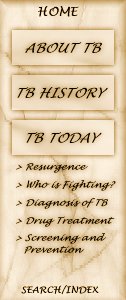
Diagnosis of Tuberculosis
Tuberculin (Mantoux) Skin Test |
 |
|
The Tuberculin Skin Test is used to screen healthy individuals who may have been infected with tuberculosis.
Your doctor begins by inserting the tuberculin syringe into your forearm, and administering the dose. The dose is injected just under the skin.
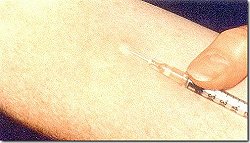
|
After the tuberculin dose has been administered a tight 10 mm "wheal" should form at the site of insertion, a wheal is a term that is used to describe the blister like feature that forms on the skin.

|
| A Tuberculin "wheal" forms on the surface of your skin. |
Two important points:
- Do not put a bandage over the wheal area
- Do not scratch the wheal area
After 48-72 hours, the skin test will be read, which is done by measuring the diameter of the wheal with a simple ruler. If the wheal has grown to 10mm or more, it means the test is positive. This does not mean you have TB! A positive tuberculin skin test means that your body has come into contact with the TB bacteria at least once, and further testing will be done to make sure you don't have active TB.
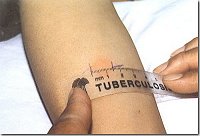
|
Further testing may be required if the wheal diameter is 5mm or greater, and one of the following conditions is also true:
- patient is of preschool age
- patient has been in contact with infectious TB
- patient tested positive for HIV/AIDS
- abnormal chest x-ray suggestive of old TB
Normal Reaction and Healing: a small red, pimple-like eruption will appear within 2-4 weeks. It will likely crust over and weep in a few days. Healing may take 1-3 months, leaving a small scar.
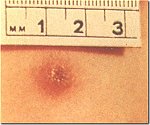
|
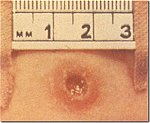
|
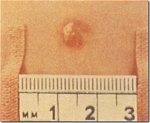
|
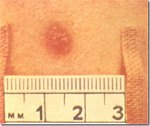
|
| Normal Reaction and Healing: (from top-left, clock-wise) | |
